All the solutions provided in McGraw Hill My Math Grade 1 Answer Key PDF Chapter 5 Lesson 6 Problem-Solving Strategy: Make a Table will give you a clear idea of the concepts.
McGraw-Hill My Math Grade 1 Answer Key Chapter 5 Lesson 6 Problem-Solving Strategy: Make a Table
Explore and Explain
Joel drinks 10 glasses of milk each week, How many glasses of milk does he drink in 4 weeks?
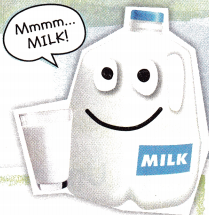
1. Understand
Underline what you know.
Circle what you need to find.
2. Plan
How will I solve the problem?
3. Solve
I will make a table.
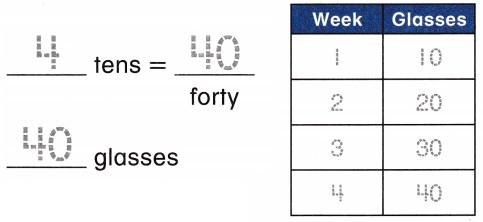
4. Check
Is my answer reasonable? Explain.
Answer:

4 tens is 40
40 glasses
Explanation:
We know that Joel drinks 10 glasses of milk each week
We need to find how many glasses of milk he drinks in 4 weeks
4 groups of tens is 4 tens
4 tens is 40
So, Joel drinks 40 glasses of milk in 4 weeks.
Practice the Strategy
Lea played with 10 different toys each day. How many toys would she have played within 5 days?
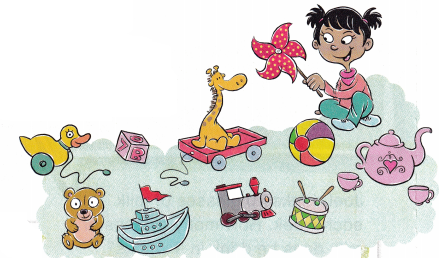
1. Understand
Underline what you know.
Circle what you need to find.
2. Plan
How will I solve the problem?
3. Solve
I will ….

___________ tens = ____________
___________ toys
4. Check
Is my answer reasonable? Explain.
Answer:
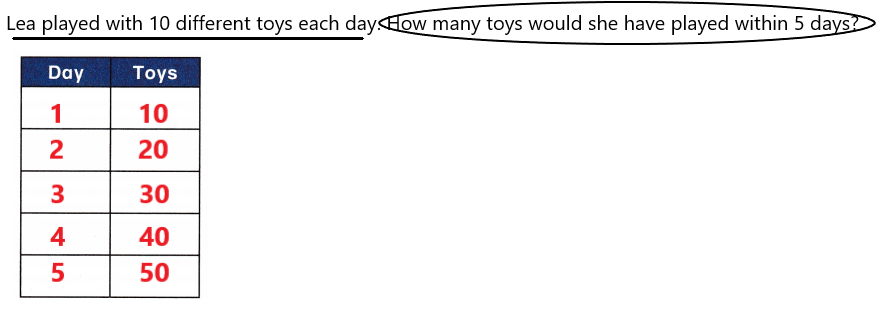
Explanation:
We know that Lea played with 10 different toys each day
We need to find the number of toys she would have played within 5 days
As we know 5 groups of tens is 5 tens
5 tens is 50
So, Lea have played with 50 toys within 5 days.
Apply the Strategy
Question 1.
Bobby found shells at the beach. He found 10 shells each day for 6 days. How many shells did he find in 6 days?
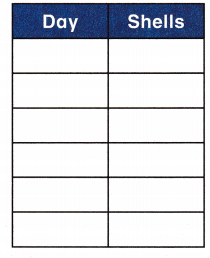
___________ shells
Answer:
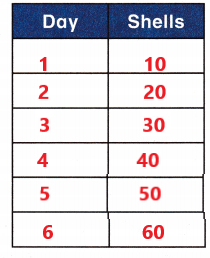
Explanation:
We know that Bobby found shells at the beach
He found 10 shells each day for 6 days
6 groups of 10 is 6 tens
6 tens is 60
So, Bobby found 60 shells in 6 days.
Question 2.
A doctor sees 10 children a day. How many children does he see in 4 days?
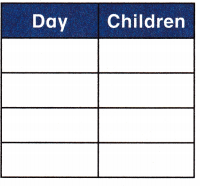
____________ children
Answer:

Explanation:
We know that a doctor sees 10 children a day
We need to find the number of children the doctor sees in 4 days
4 groups of 10 is 4 tens
4 tens is 40
So, a doctor sees 40 children in 4 days.
Question 3.
10 birds fly south every day. How many birds will fly south after 7 days?
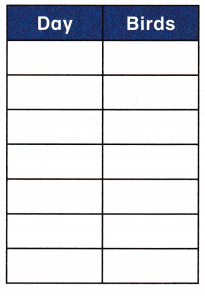
_____________ birds
Answer:

Explanation:
We know that 10 birds fly south every south
We need to find how many birds fly south after 7 days
7 groups of ten is 7 tens
7 tens is 70
So, 70 birds fly south after 7 days.
Review the Strategies
Choose a strategy
- Make a table.
- Act it out.
- Write a number sentence.
Question 4.
Brianna puts 10 pears into 2 bowls. How many pears are there in all?
____________ + ____________ = ____________ pears
Answer:
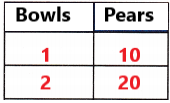
Explanation:
Brianna puts 10 pears into 2 bowls
2 groups of 10 is 2 tens
10 + 10 = 20 pears
So, there are 20 pears in all.
Question 5.
Ms. Kim has 18 balloons. She gives Rae and Doug the same number of balloons. How many balloons does she give each person?
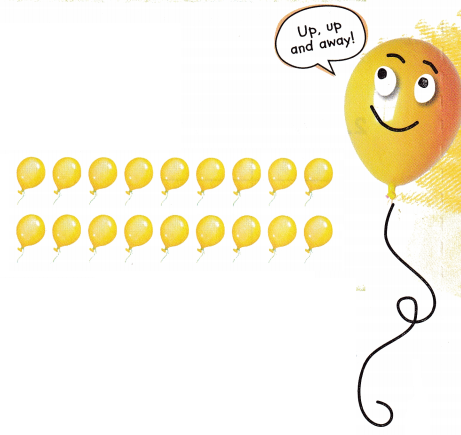
______________ balloons
Answer:
9 balloons
Explanation:
Ms. Kim has 18 balloons
She gives Rae and Doug the same number of balloons
Use doubles fact
9 + 9 = 18
So, Mrs. Kim gave 9 balloons to each.
Question 6.
Hill Elementary has 4 spelling bee teams. Each team has 10 students. How many students are there in all?

______________ students
Answer:

Explanation:
Hill Elementary has 4 spelling bee teams
Each team has 10 students
4 groups of 10 is 4 tens
4 tens = 40
So, 40 students are there in all.
McGraw Hill My Math Grade 1 Chapter 5 Lesson 6 My Homework Answer Key
Problem Solving
Question 1.
Mara has 3 groups of 10 balls. How many balls does Mara have in all?
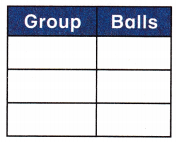
_____________ balls
Answer:
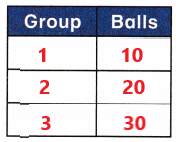
Explanation:
Mara has 3 groups of 10 balls
3 groups of 10 is 3 tens
3 tens is 30
So, Mara have 30 balls in all.
Question 2.
There are 10 ducks in each pond. How many ducks are there in 4 ponds?
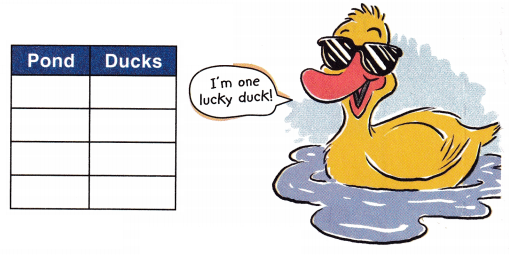
_____________ ducks
Answer:

Explanation:
There are 10 ducks in each pond
We need to find how many ducks are there in 4 ponds
4 groups of tens is 4 tens
4 tens = 40
So, 40 ducks are there in 4 ponds.
Question 3.
Toy whistles are sold in bags of 10. Alexis needs 50 whistles. How many bags should she buy?
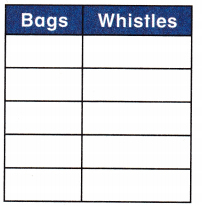
_____________ bags
Answer:

Explanation:
Toy whistles are sold in bags of 10
Alexis needs 50 whistles
5 groups of tens make 50
So, Alexis need 5 bags of whistles.
Math at Home Take advantage of problem-solving opportunities during daily routines such as riding in the car, bedtime, doing laundry, putting away groceries, planning schedules and so on.